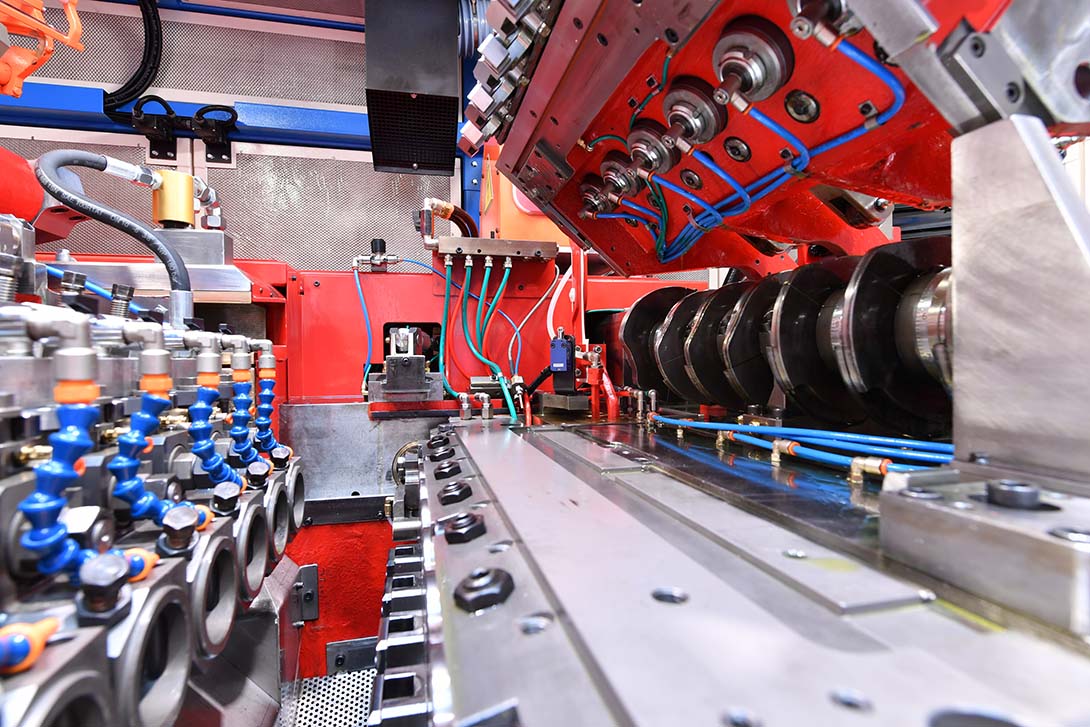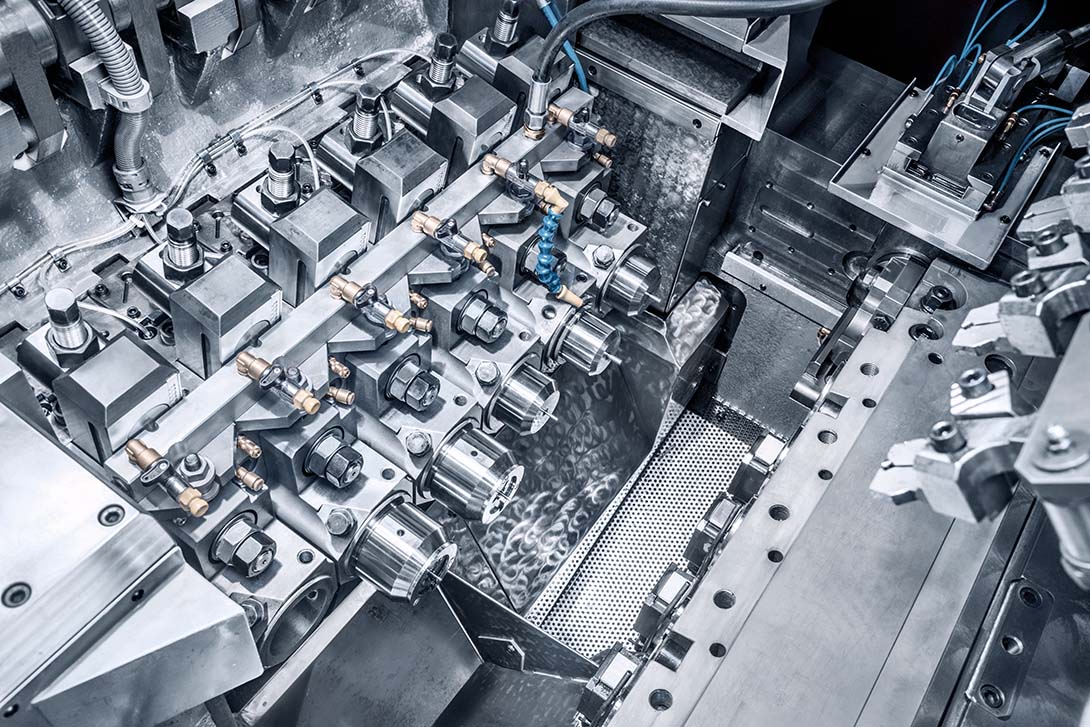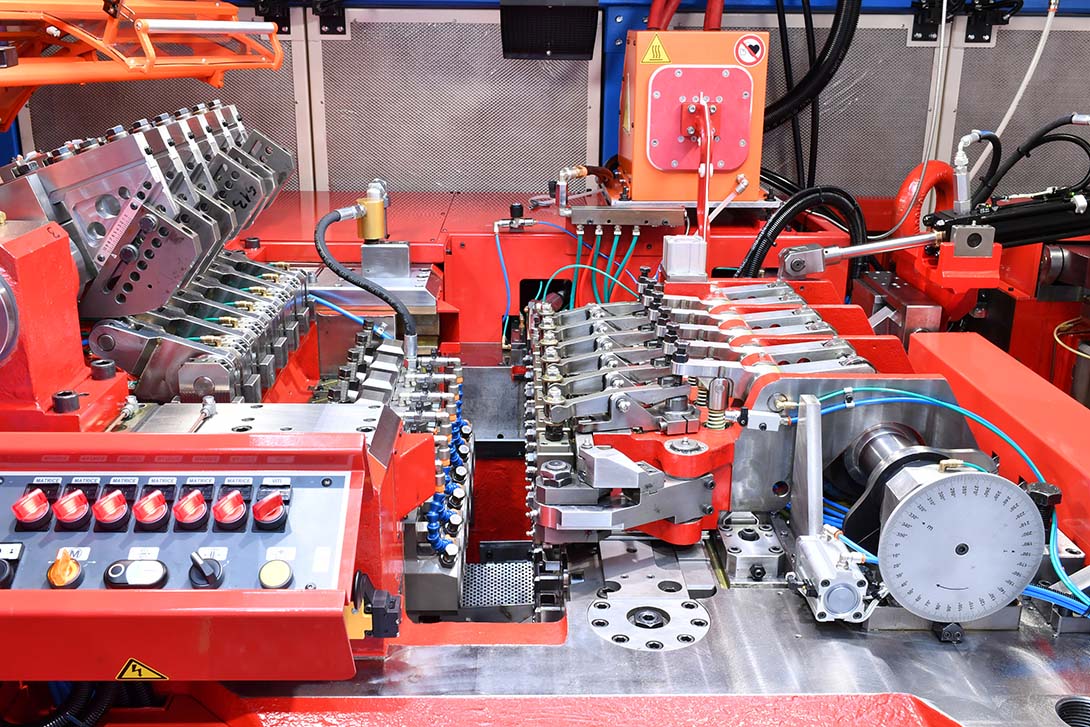
A recognised expert in both cold forging technologies and the development and training of its operational personnel, Independent Consultant Derek Barnes is keen to dispel the perception that operating and managing cold forming machinery is the mythical ‘black art’ it is often claimed to be and structured training should be the cornerstone of successful businesses.
Following on from the article ‘Dispelling the black art’, which was published in Fastener + Fixing Magazine in May 2021 and discussed the need for structured training for machine setters in the cold forming industry, this article focuses on a three stage training process that involves establishing sustainable training to produce the next generation of engineers.
The need for training
Cold forming machines and tooling are very complex and are used to produce high volume precision fasteners and parts that are used across the automotive, aerospace, military, construction and general industries. The quality demands of these industries can be very exacting, which leads to the requirement to set the machines with accuracy and repeatability.
Having a structured standardised training approach is the best way to achieve the product quality consistently, batch to batch, and improves efficiency by reducing change over times, reducing scrap and improving tool life.
Organised training is also a great way to attract new people into the industry and retain staff, as they can see what they will learn; how long it will take; fully understand what is expected; and what the outcomes will be.
Stage one: Basic training
The aim of the basic training is to train how to set-up a machine safely and correctly, make necessary adjustments, run the machine, size the part and troubleshoot any issues found. It’s an opportunity to get the basics in and encourage best practice. Much of this will stay with them for the rest of their career, so it is important to teach best practice from the start.
At the end of the basic training the trainee will be signed off as competent to set-up a machine under minimum supervision. It is impossible to cover every occurrence and every part, which is why some supervision is necessary after basic training.
The starting point of the training should always be with theory. Discussing and illustrating what happens during the process gives a foundation to build upon and this theory will be referenced time and again once training on the machine starts.
The theory covered should include as a minimum:
- Tooling materials, properties and wear points.
- Tooling assembly, fit, form and function.
- Understanding wire properties and material flow.
- Understanding machine mechanisms.
- Cold forming theory. Standard geometries.
- Building the progressions to achieve the final part required.
There is a lot of detail for trainees to take in and care must be taken not to overwhelm them. To stop this from happening the theory is presented as part of the training documentation, either as pre-printed documents or even better the trainee making their own notes as the trainer presents the information. This allows for access at any time to confirm their understanding of the process. Another benefit of the trainee making their own notes is that it gives instant feedback to the trainer as to whether the individual has understood what has been taught. That feedback loop is very important for the trainer to show the progress and also allow them to develop the training to suit particular learning styles.
Before starting to work on the machine, safety must be made the number one priority and be stressed at all stages. The combination of high tonnage machinery and hardened tool steel is potentially dangerous and a healthy respect for the process is required.
When training on the machine commences it must be carried out in a structured way, going through the set-up procedure in order creates the method of setting. This should always be documented in a training manual for each specific machine. The manual is used as a training aide all the way through the three stage process. The trainee should be encouraged to make their own notes and sketches within the manual to help them to understand more fully. The manual can then be used at a later date to reference parts of the setting procedure that they may have forgotten or not be too clear on. This creates self confidence that they can solve machine issues themselves without always having to ask someone else.
The manual breaks down the process into a series of steps that can be followed through in order to set-up a machine. It also contains tips of what to look for when troubleshooting issues.
Introducing setting measurements alongside the theory and practice of setting, makes the process more scientific and not only helps to set the machine quickly and accurately they also help to reduce set-up scrap and improve tool life from accurate setting.
When the training set-up is complete there will be an opportunity to do some training on troubleshooting running issues but at this stage it should be kept to a minimum, with the emphasis being more on doing set-ups to give the trainee as much experience as possible in changing the machine over and setting correctly.
Part of the basic training is also learning the terminology for both the tooling and the machine. As well as starting to get an understanding of the machine mechanisms and timings, which helps with their knowledge of how the tooling moves.
Most machines have a process monitor fitted and the set-up and operation of the unit is included in the training. It needs to be explained that it should be used as a tool to help with the machine setting and the various read outs need to be interpreted to improve the set-up.
Once a good part has been produced the training focus moves to measurement, the correct use of gauges and also the importance of visual inspection. This leads nicely into discussing what defects could be present and how they relate back to the tooling.
Training is also carried out on how to use and fill in the required documentation, such as daily logs, first and last article inspection sheets, handover logs and quality documentation.
Stage two: Gaining experience
Once the trainee has been signed off as being competent to set-up a machine the next stage can begin. This is a period that will help them to gain more experience in a production environment, running jobs and troubleshooting.
It isn’t possible to cover every eventuality during the basic training stage and indeed isn’t desirable as it can lead to overloading them with too much information, when everything is new to them, and cause them to become confused and not really take in any information.
Trainees will naturally come across situations that they haven’t seen before. When this happens then it’s important to re-emphasise what was learnt during basic training and refer back to the training manual, the forming theory and their additional notes. They should also add to their notes to help them in the future.
The first thing to do is to pair them with a mentor, ideally the trainer should be the mentor, but if this isn’t possible then another suitable person should be appointed. The role of the mentor is to support the trainee and be the person they go to if they need to ask advice. It is really important that the mentor understands the training method and stays within its bounds to maintain the learning process.
Communication between the trainer and the mentor is key to ensure that best practice is being followed and feedback to the trainer helps to modify training methods for future candidates.
Worst case scenario is that the mentor starts to retrain. Their role is to offer support and advice and refer the trainee to their training manual and documentation in order to follow the correct procedure. If there is doubt over anything then the trainer should get involved in order to steer things in the right direction.
During the ‘gaining experience’ period, the trainee should set and run production jobs that are the same parts that they have been trained on. This allows them to gain confidence in their own ability and also learn what sort of running issues occur and how to solve them. It also helps them to understand in more detail the types of defects that occur when tooling starts to wear. 
If they are making good progress and confidence is high, then different parts can be tackled, which will push their understanding and knowledge further. Although they may need more supervision during the initial setting.
Stage three: Development
The development stage starts once the setter is setting and running parts and solving most issues without any help. The aim of the development stage is to build on their knowledge and further expand their understanding of the forming process, the machine operation and the tooling.
It now becomes a combined effort from the trainer and the mentor and will vary depending on the ability of the person concerned. The aim is to develop the thinking of the individual to create an all-round skilled person with the ability to set development jobs and feedback to engineering on outcomes to improve efficiencies.
There are really no limits and the continual development of the machine setters should be a high priority for any company that wants a highly motivated team with the ability to solve problems and improve the process efficiency in all aspects, as well as give the customer what they want.
Summary
By using the three stage process to train machine setters – basic training, gaining experience and further development – the trainees will learn how to assemble tooling and set the machine safely to produce good quality products. They will understand the tooling fit, form and function, as well as the basic forming theory and the importance of the progressions. They should also have a comprehensive training manual and be confident using it, as well as being able to set measurements to make the process more scientific.
The trainee will have also gained confidence by setting and running production jobs and troubleshooting any issues, enabling them to understand more about tooling wear and its effects. Finally, they will learn more about the machine, supported by a mentor, and learn a more in-depth understanding of forming theory and machine operation. They will also be able to set up new parts and feed back to engineering on tooling and running issues. Working as a team to improve efficiency.

Biog
Will joined Fastener + Fixing Magazine in 2007 and over the last 15 years has experienced every facet of the fastener sector - interviewing key figures within the industry and visiting leading companies and exhibitions around the globe.
Will manages the content strategy across all platforms and is the guardian for the high editorial standards that the Magazine is renowned.








